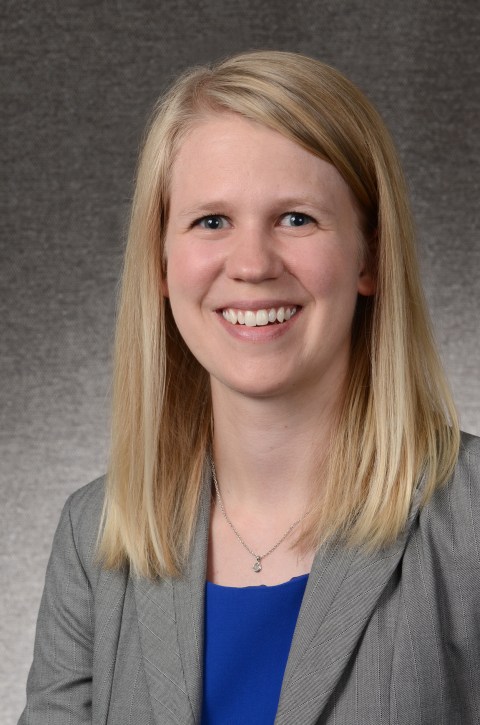The lab of CU Cancer Center investigator, Jennifer Richer, PhD, has been hot on the trail of new treatments against triple-negative breast cancer (TNBC), an especially dangerous form of the disease. Recently, the lab has been exploring changes that allow these breast cancer cells to hide from the immune system while traveling through the body to seed new sites of metastasis. This line of research is paying off, showing chains of events that make TNBC especially aggressive. The question has been where these chains can be broken – where are the weak links?
In January 2020, Richer lab postdoctoral researcher, Michelle Williams, PhD, earned a National Cancer Institute F32 grant to support three years of work against a link in TNBC’s immune-cloaking chain that seems especially breakable. This “link” – a protein called HO-1 made by the gene HMOX1 – breaks down heme from red blood cells into waste products including bilirubin – newborns with jaundice due to excess bilirubin might take a drug called tin mesoporphyrin (SnMP) to block HO-1 and thus the breakdown of heme to even more bilirubin.
HO-1 and the bilirubin it produces may have another effect in disease, namely to slow immune system activity. In laboratory models, bilirubin has been shown to keep the immune system from attacking transplant organs, and, unfortunately, it seems that many cancers including TNBC use HO-1 as well. But does TNBC use HO-1 and bilirubin to tamp down the immune system’s action against tumors? The answer to this question is especially important because standard of care therapies like chemotherapy can increase HO-1 and bilirubin expression – and so disarming this response may make cancers more susceptible to chemo.
One aim of Dr. Williams’ studies is to explore this question of what, exactly, bilirubin is doing in and near TNBC tumors.
“We believe that the bilirubin produced by HO-1 can promote the infiltration of bad macrophages that are known to promote tumor progression. And bilirubin can also prevent macrophages from eating dead cells. When you treat with chemo that causes cell death, you want those dead tumor cells to be cleared by macrophages or you get a kind of wound that can further promote cancer,” Williams says.
In addition to understanding the role of HO-1 and bilirubin in cancer, Williams hopes to stop it.
“Almost all TNBC patients will get chemo at some point. Our hypothesis is that blocking HO-1 with the drug SnMP will make cancer cells more susceptible to death from chemotherapy – they won’t acquire the survival pathways they need to survive chemo or to metastasize,” Williams says. “We want to understand if we combine targeting HO-1 with chemo, if can we limit breast cancer mortality.”
The line of research follows a national trend in targeting cancer not only from the faulty genetics inside the disease, but also from the conditions of the tissue ecosystem that surrounds the disease, known as the tumor microenvironment. Now with promising preliminary results and funding to continue the hunt, Williams and other researchers in the Richer lab hope that turning off TNBC’s ability to dampen the immune system will keep cancer from becoming resistant to chemotherapy.




.png)